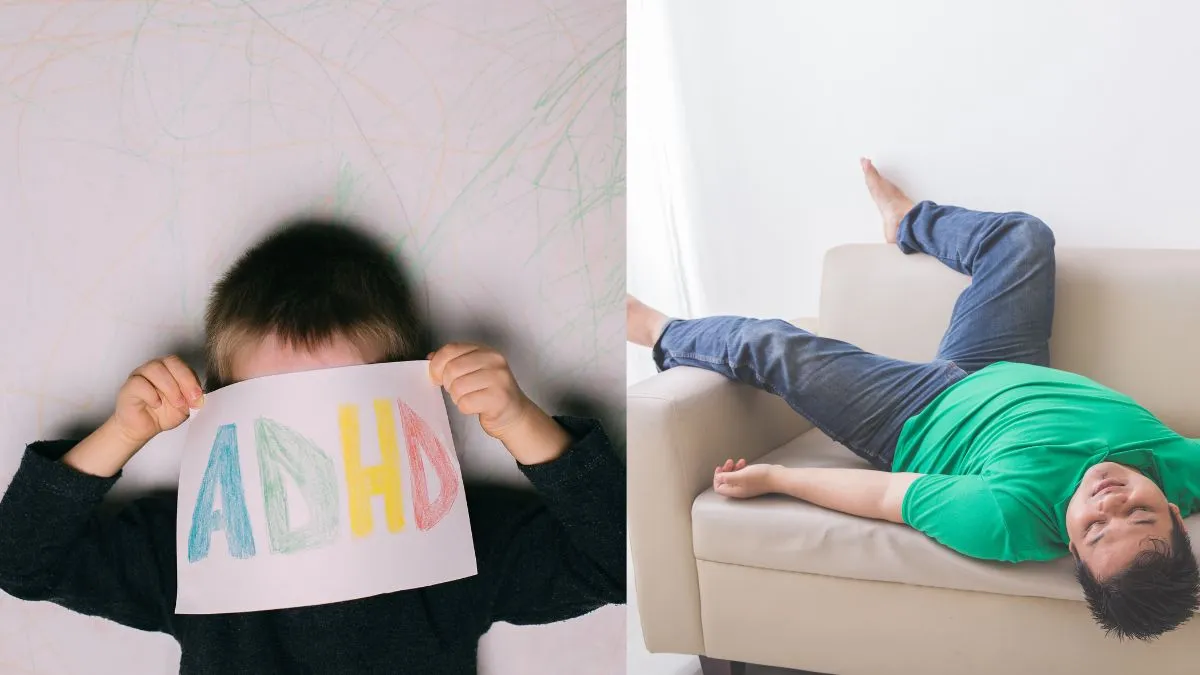- By Bornika Das
- Fri, 24 Oct 2025 07:52 PM (IST)
- Source:JND
It is paramount for parents, teachers and caretakers to understand the thin line between laziness and ADHD. Most often, when kids are inattentive, unfocused, or lack the completion of tasks, these are misinterpreted as laziness. Yet, Attention Deficit Hyperactivity Disorder (ADHD) is a neurodevelopmental disorder marked by pervasively adverse patterns of inattention, hyperactivity, and impulsivity that markedly affect a child's everyday life. Whereas laziness is associated with a lack of drive or effort, ADHD results from variations in brain function, rendering it significantly more difficult for the children to control their behavior and attention despite a willingness.
Most parents tend to overlook the different variations between ADHD and laziness since some symptoms overlap on the surface. Kids with ADHD may have trouble starting tasks, appear disorganized, or regularly lose concentration, which can be misconstrued as deliberate shirking or inability to work hard enough. It is important to determine common indications that differentiate ADHD from sheer laziness, including issues with impulse control, executive function deficiencies, and emotional control difficulties. In conversation with The Daily Jagran, Dr Puja Kapoor, Paediatric Neurologist and Co-founder of Continua Kids, shares the differences between ADHD and laziness in children.
When Inattention Looks Like Laziness
Children with ADHD struggle with attention regulation. This inattention can resemble laziness because these children often take longer to complete tasks or require repeated reminders to finish them. For instance, a parent may ask a child to brush their teeth, and the child keeps brushing without realising how much time has passed or that the school bus is about to arrive.
Recommended For You
Unlike typical laziness, ADHD is a developmental condition that starts early in life. Its symptoms such as inattention, forgetfulness, and distractibility, are evident before the age of 12.
Young children, by nature, are not lazy. They are curious, energetic, and eager to explore the world. Therefore, when a small child consistently struggles to complete daily routines, forgets instructions, or needs constant supervision, it’s worth investigating whether ADHD could be the underlying cause. In
The Growing Challenge: Recognising ADHD as Children Age
As children grow older, the distinction between laziness and inattention becomes harder to spot. Many school-age children (around 7 to 10 years old) begin to show signs when they are expected to become more independent, managing homework, packing their bags, or following routines without reminders.
Parents might say, “His brain is very sharp, but he just doesn’t do things on time.” Despite having a good IQ, these children appear unmotivated because their attention span is short. They forget what task they are doing, how long it should take, or what comes next. This forgetfulness and lack of sequencing are classic markers of ADHD, not laziness.
Such children often need continuous prompting to stay on track. Without it, they drift into their own thoughts and fail to finish tasks. When pushed, they might complete the task for a few minutes but then lose focus again.
-1761315591649.jpg)
ADHD vs Laziness In Children (Image Credits: Canva)
Why ADHD Often Goes Unnoticed in Early Years
In many Indian households, parents tend to assist children closely in daily activities from brushing teeth to getting ready for school. This parental scaffolding masks early symptoms of inattention, making it difficult to identify ADHD in early childhood.
The signs become clearer once the child starts school and faces increasing academic and behavioural demands. Around ages 8 or 9, when independence is expected, the inability to self-manage draws attention and parents often seek help at this stage.
ALSO READ: How To Discipline A Child With ADHD? 5 Effective Strategies For Parents
Proper Evaluation Is Key
Because symptoms of ADHD and laziness overlap, careful assessment is essential. Should parents and clinicians look for early patterns? Was the child inattentive even before academic responsibilities increased? If yes, ADHD may be the cause rather than a behavioural choice.
Additionally, a thorough background check is necessary:
Family History: Any Similar Behavioural Or Attention-Related Issues.
Social environment: Is the child struggling with friendships, facing school difficulties, or reacting to stress at home?
Medical screening: Hearing and vision tests are crucial. Sometimes, undiagnosed vision problems make children appear inattentive or unmotivated simply because they can’t see clearly.
If these possible causes are ruled out and symptoms persist, an ADHD evaluation is highly recommended.
ADHD is often misunderstood as laziness or lack of motivation, leading to frustration for both parents and children. Early diagnosis and intervention can make a significant difference helping children learn coping skills, improve focus, and build confidence.






